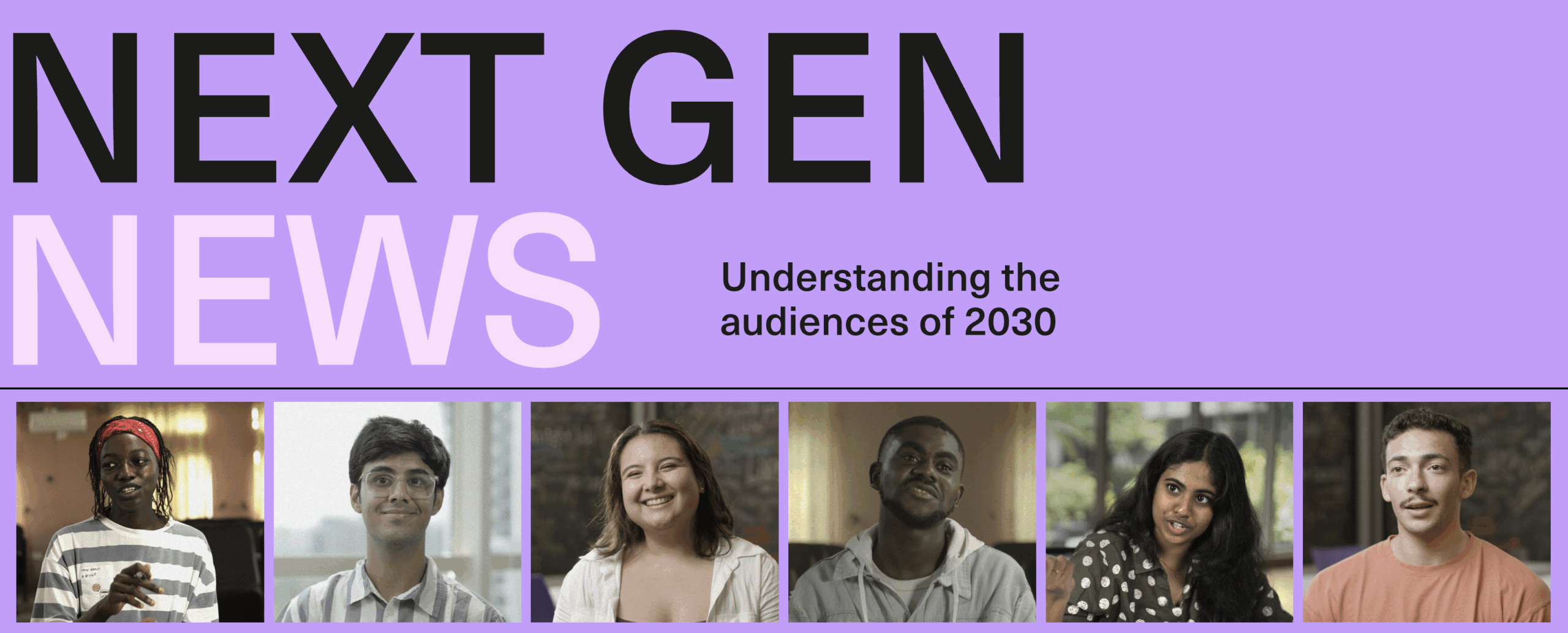The Next Gen News research project interviewed young people from Nigeria, India and the US to work out how news publications can better tailor their content to the next generation. LINA has combed through the findings to identify what was most relevant to local, Australian newsrooms.
How do young people consume their news?
- They’re digital simul-tasking, meaning they’re often doing a lot on their phones at once; flicking through apps, reading an article, messaging a friend, etc.
- They are filtering the news through a trusted network, like finding out about world events via a content creator they follow and trust.
- They make sense of the news through digital discourse, so “relying on personal opinions to frame and understand news.” This could mean watching a content creator discuss their own opinion on a topic, or talking with a friend.
- They have sophisticated search systems; they have a set routine for how to verify and check news.
How can you present your news in a way that young people understand?
Next Gen News found that the reason why social media storytelling and formats like video and documentary-style podcasts are reaching the younger generation is that “consumer preferences have shifted to being more visual and graphic”.
One research participant said they want news to be delivered in a way that’s easy to understand, informal, and engaging.
A barrier raised by another participant (Hope, 23 years old from Chicago) is this: “Things are written in a really complicated way where I feel like I need to be more educated or literate… I have a degree [from Northwestern University], and I am still like, ‘I don’t know that I’m smart enough to be intaking this information’.”
Next Gen has outlined six specific opportunities for media outlets, here are the ones most relevant to local, independent newsrooms
- If young people like to filter their news through a trusted network, and rely on personal opinions to frame their news, then news outlets could benefit from partnering with independent content creators. Check out what Morning Brew (a US publication) is doing with its ‘Creator Program’. Another option is to elevate individual journalists within your publication to create a personal brand and connection with your audience — for a LINA relevant example, you only have to look to Kim Smee from the Manly Observer to see how it’s done well!
- Modernise your language: Keep it “simple but not simplistic”. Use dot points, include summaries/timelines, and stay away from complex jargon.
- Keep your articles short and sharp, and if that’s not possible, offer a short, summary paragraph at the start of an article for those who don’t want to read the whole thing. One research participant (Harpreet, 23 years old from Bangalore) says ““I prefer reading shorter articles online that give the gist of what is happening…”
- Meet the young people where they already are: Social media. The report suggests that there is no reason to think that young people will transition towards websites and other ‘older’ platforms as they age, they will continue to use social media. Which means that’s your future as a news business! Also, in 2022, the Pew Research Centre found that “older adults are adopting TikTok for news consumption at similar rates” to young people… so upping your social media game won’t just benefit your younger audience. Another idea is to mimic the social media experience on your website, so attaching short form video to your articles, allow for scrolling, use short texts etc.
- “[News producers] just keep giving us bad news. There is never any solution. Why should I only keep reading about terrible things happening around me?” Jinal, 23, Female, Bangalore. Focus on solutions journalism, and adjust your tone to be more hopeful and optimistic. If you’re covering a totally dire topic, finish off with some information about how things are going to move forward, and what solutions are on offer for your readers to get involved in.
Read the full Next Gen News Report here.


